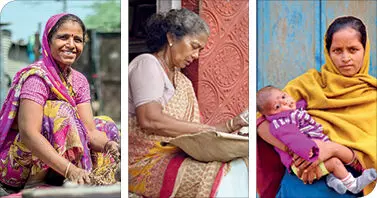Set ‘em free
Women’s participation in the labour force will remain dismally low as long as they stay entrapped by unpaid household work

This year’s Republic Day parade was a special one. The celebration of Indian women and Nari Shakti as recurrent themes was a sight for sore eyes. In a country where women are both revered and raped, a public spectacle is often necessary to set the agenda straight. As we head into yet another Women’s Day, it’s symbolic and yet essential, to use this day to highlight the lacuna that persists between men and women in our country.
There are just not enough Indian women engaged in productive work. As per the recently released paper named, ‘Gender gap in mobility outside home in urban India’ in Science Direct journal’s ‘Travel Behaviour and Society’, almost half of urban Indian women stayed at home on most days. Also mentioned in the study is the lack of mobility that ails India’s females. Drawing its conclusions from the 2019 ‘Time Use Survey’ (TUS) steered by the Ministry of Statistics and Programme Implementation across 1.38 lakh Indian households, the paper highlights the gaps that continue to gnaw at women’s progress in the country.
Only 47 per cent of women left their homes at least once a day as compared to 87 per cent men. 81 per cent women who are studying or working step out of the house compared to 90 per cent and 92 per cent men respectively. Hardly 30 per cent women who are neither studying nor married get out of the house daily. About 70 per cent of unemployed women versus about 35 per cent non-working men stay at home. The paper also interestingly shows that by the time the respondents turned 26 years of age, around 80.7 per cent men had got jobs but only 19.1 per cent women became employed. This gap between male and female employment subsequently only widened with age. This paper authored by Rahul Goel of IIT Delhi’s Transportation Research and Injury Prevention Centre also deduced that 61.9 per cent of the women respondents were not employed as against 12.4 per cent men while only 11 per cent women and 38 per cent men were in the working category (a side bar on rising unemployment levels in general as well).
We have for long discussed how women are shackled by domestic work — a kind of labour that doesn’t make a living and does little towards nation-building — and a trend that’s been exacerbated by the pandemic. Women spend at least 5 hours on household chores every day. Unpaid labour such as cleaning, cooking, child care etc. have robbed women of time, desire, and opportunity to earn a livelihood. I witnessed this first hand with a housekeeper that I recently employed. She exhibited all the issues mentioned in the paper. For months, she hadn’t stepped out of her house on a daily basis. Inflation and rising prices forced her to take up a job. She didn’t have mobility i.e., she didn’t ride a scooter, which made her 20 km trek to my house a time-consuming, tiring journey. With two school-going kids and a working husband, she also took care of all the household chores. The result was she was almost always late, always tired and cribbing, with little or no energy to devote time and effort to her role as my housekeeper. After 2.5 months of an unsatisfactory experience on both sides, she quit citing son’s ill-health. The woman wanted to work, needed to work, and would have made for decent staff had she not been encumbered by household chores.
There are thousands of such women across India who want to make a career, have financial independence, or at least contribute to their family’s gross monthly earnings. But neither are they encouraged nor offered an environment that supports their aspirations. I wish they could break free.
The writer is an author and media entrepreneur. Views expressed are personal



